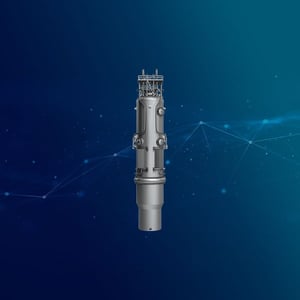
How SMRs Gain Design Approval in the U.S.
Introduction
Nuclear power has long been a reliable and clean energy source, but it’s facing a modern challenge of balancing efficiency, safety, and environmental concerns. Enter small modular reactors (SMRs). These advanced nuclear reactors are compact, efficient, and designed to be built in factories rather than on-site, significantly reducing costs and construction time. SMRs offer a fresh approach to clean energy, with the potential to meet growing demand while lowering carbon emissions. However, before they can be built and used in the United States, they must go through a thorough design approval process overseen by the U.S. Nuclear Regulatory Commission (NRC).
Understanding how this regulatory process works builds trust in these innovative technologies while also highlighting the NRC’s critical role in ensuring public safety. Below, we’ll break down the process step by step.
What Is the NRC and Why Does It Matter for SMRs?
The NRC is the federal agency responsible for regulating nuclear power in the U.S. Their job is to ensure that any nuclear facility operates safely, securely, and without harming the public or the environment. When a company wants to certify a new small modular reactor design, they must convince the NRC that it meets stringent safety standards.
Due to their innovative design, SMRs introduce specific challenges and opportunities for regulators. These include the need for new regulatory frameworks to address novel designs and multi-module configurations, the complexity of licensing processes stemming from limited operational experience, and the necessity of adapting emergency planning and safety protocols for smaller, distributed reactors. While SMRs boast advanced safety features, reduced on-site construction, and lower waste production compared to traditional nuclear reactors, these factors demand a thorough and detailed review to ensure they fulfill their potential for safe and reliable energy.
Step-by-Step Regulatory Process for SMRs
Standard Design Approval
The first step in the regulatory process is to submit the reactor’s design to the NRC. This includes detailed plans, data from comprehensive test programs, engineering calculations using NRC approved computer codes, and numerous supporting technical reports that show how the SMR will operate, its components, and its safety systems, and key information such as how it prevents overheating or handles emergencies. The NRC reviews these submissions to make sure the design complies with existing safety standards and regulations.
For SMR developers, this step is crucial. They must present a design that’s fully capable of addressing known risks, such as natural disasters or potential system failures.
The heart of the certification process is the NRC’s rigorous safety evaluation. Engineers and scientists carefully review the SMR’s design against highly prescriptive safety standards. This includes auditing engineering calculations and test data and performing independent code analyses to ensure that they can handle everything from routine operations to worst-case scenarios.
This part of the process is vital for SMRs because they use new designs. The NRC examines how these smaller, modular reactors will prevent accidents, withstand natural disasters, and protect the public from exposure to radioactive materials.
Site Specific License Application
Once the SMR design is approved, the Part 52 customer must apply for a license to construct and operate the reactor, known as a Combined Operating License (COL). This application references the approved standard design and provides additional details, including specific plans for site construction, the reactor's operation protocols, and measures to ensure both safety and security. The design of the reactor is not re-reviewed by the NRC unless there are site-specific deviations.
The NRC evaluates the application to verify compliance with regulations and confirm the company has the expertise and resources required to operate a nuclear facility responsibly.
The NRC also conducts an environmental review. This step examines how building and operating the reactor might impact the surrounding environment, including local ecosystems, water resources, and air quality.
During this stage, the NRC also takes public input into account. People from nearby communities, environmental organizations, and other concerned parties can share their thoughts or raise concerns. Transparency is essential in building trust and ensuring accountability throughout the process.
Final Approval and Licensing
If the Combined Operating License demonstrates it meets all the regulatory requirements, the NRC grants a license to construct and operate the reactor. This approval means the reactor is deemed safe, secure, and ready to begin construction and eventually operation. The new SDA/COLA process under 10 CFR Part 52 removes a serious financial risk realized by the previous generation of nuclear plants. Under the old 10 CFR Part 50 process, a nuclear plant could be built under an NRC approved construction permit but not be granted an operating license; leaving the financial burden on the owner and customer.
Inspection and Testing
During the construction phase, the NRC inspects construction activities to assure that the plant is built in accordance with the approved design. They also observe tests of key systems to ensure they operate in compliance with the approved Inspection, Testing, Analysis Acceptance Criteria. Any problems found during this stage must be fixed before the NRC allows the reactor to go online.
However, even after the license is granted, the NRC continues to oversee the reactor’s operations through periodic inspections and monitoring.
How Long Does Regulatory Approval Take?
The regulatory process for SMRs is meticulous and, as a result, can be relatively lengthy. Historically, the process has taken many years to complete and reflects the NRC's commitment to safety, thoroughness, and transparency. Each step involves in-depth reviews, rigorous testing, and opportunities for public input, ensuring that no aspect of a reactor's design or operation goes unchecked.
The NRC recently introduced a technology-inclusive, risk-informed framework to help streamline approvals while maintaining rigorous safety standards. These efforts aim to reduce redundancies and accelerate reviews for advanced reactor designs without compromising public or environmental safety.
Why the Process Matters
The NRC’s design approval process for small modular reactors may be meticulous, but it’s essential for ensuring public safety and building confidence in nuclear energy. By carefully reviewing every aspect of an SMR’s design, construction, and operation, the NRC helps prevent accidents, fulfilling its mandate to protect the public health and safety.
At the same time, the process encourages public involvement, creating an opportunity for communities to have a say in local projects. This transparency boosts public trust and ensures potential environmental or community impacts are fully addressed.
The NuScale Advantage
NuScale’s SMR became the first of its kinds to be certified by the NRC, making history in the nuclear industry. The NRC completed a rigorous review of NuScale’s Design Certification Application (DCA), culminating in the issuance of the Final Safety Evaluation Report in August 2020 and the Standard Design Approval in September 2020. This approval confirmed the safety and reliability of NuScale’s 50-MW SMR design and marked a major milestone, both for the company and for advancing clean nuclear technology.
The review process took 41 months, setting a record as the fastest design review in the NRC’s history. This efficiency was made possible by the innovative and simplified design of NuScale’s SMR, which features groundbreaking passive safety systems that operate without the need for external power, operator intervention, or added water during emergencies. This design approach has redefined how safety in nuclear reactors is achieved.
The design approval validates NuScale’s technology but also paves the way for future projects. Additionally, NuScale has continued to improve its SMR with an uprated 250-MWt/77-MWe module approved in May 2025 after a 22-month review by the NRC. The NRC review was completed two-months ahead of schedule and represents a major advancement in regulatory efficiency. The uprated power ensures even greater energy output while maintaining the highest safety standards. This milestone represents a significant leap forward for clean energy, highlighting the potential of small modular reactors to provide reliable, carbon-free power.
Conclusion
Small modular reactors have the potential to revolutionize nuclear energy, offering a flexible, cost-effective way to generate electricity while reducing greenhouse gas emissions. However, with any technological advancement, safety comes first. That’s why the NRC’s thoughtful and thorough certification process is so important. It ensures that we can take advantage of cutting-edge innovations like SMRs without compromising safety or the environment.
As we look toward to a future where clean energy is more important than ever, the role of the NRC in guiding and regulating SMRs will remain critical. Their work allows us to move forward confidently, knowing that safety and reliability are always the top priorities.



